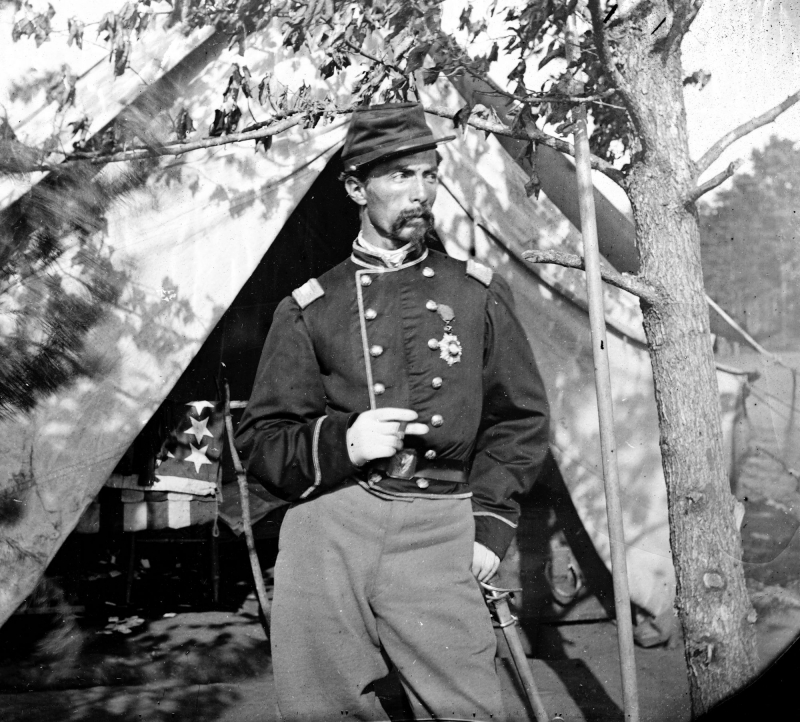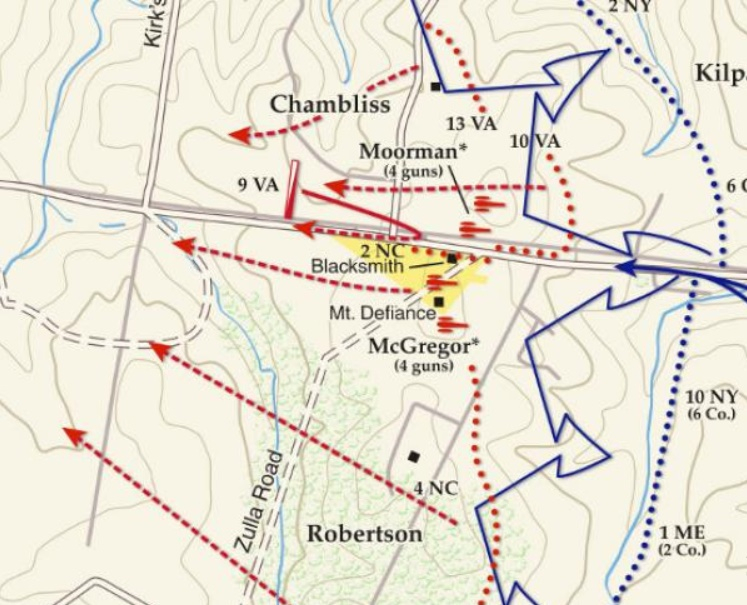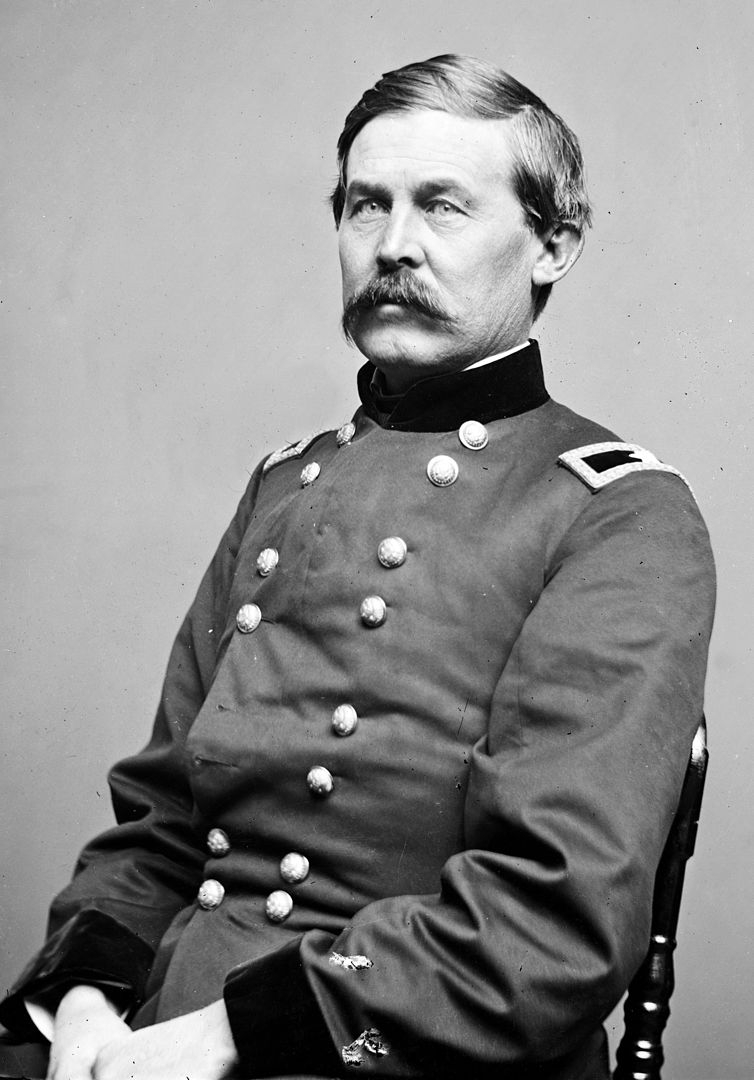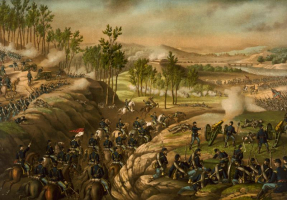Top 4 Facts About The Battle of Middleburg
The Battle of Middleburg took place in Loudoun County, Virginia, from June 17 to June 19, 1863, as part of the American Civil War's Gettysburg Campaign. One of ... read more...the earliest fights of the Gettysburg Campaign, the Battle of Middleburg, was fought by Federal cavalry looking for the whereabouts of the Army of Northern Virginia. Here are some facts about the Battle of Middleburg that you should know.
-
One of the facts about the Battle of Middleburg is that Duffié seized Middleburg with only a smattering of shots fired on the first day of the battle. As Brig. Gen. H. Judson Kilpatrick led his brigade of Federal cavalry out of Manassas Junction early on June 17, 1863, he directed Col. Alfred N. Duffié to lead his regiment, the 1st Rhode Island Cavalry, to Middleburg. He was supposed to secure the town that evening and rejoin the brigade the next day after scouting Loudoun County extensively. Passing through Thoroughfare Gap, Duffié's troops clashed with parts of Col. John Chambliss' brigade's 9th Virginia, but continued north into Middleburg, arriving at 4:00 p.m.
Duffié's lead squadron pushed along the road from White Plains and attacked pickets from the 4th Virginia Cavalry, driving them back into town. They arrived at Middleburg just as Confederate cavalry commander Maj. Gen. J. E. B. Stuart and his staff were enjoying lunch at a tavern. General Stuart and his staff were forced to make an ignominious retreat to the west with little warning. Stuart directed Lt. Frank Robertson to inform Col. Thomas Munford, who was stationed at Aldie, to move his brigade to Rector's Cross Roads.
Duffié recognized that after capturing Middleburg with only a few bullets fired, holding the town for the night would be far more difficult. He was aware that Chambliss' brigade was following him from the south, and he was quickly made aware of Munford's earlier-in-the-day transit through town to the east. Nonetheless, he elected to fulfill his orders and barricade the five roads leading into the settlement, but he chose to man those barricades with only a tiny force of pickets. Duffié positioned a stronger detachment of approximately sixty soldiers behind a wall lining The Plains road about 250 yards south of town, then led the rest of the regiment two miles south.

Brig. Gen. H. Judson Kilpatrick -en.wikipedia.org 
Col. Alfred N. Duffié -dotcw.com -
One of the facts about the Battle of Middleburg is that the Battle of Middleburg is one of the first battles of the Gettysburg Campaign. The Battle of Middleburg took place in Loudoun County, Virginia, from June 17 to June 19, 1863, as part of the American Civil War's Gettysburg Campaign. The Gettysburg campaign was a military invasion of Pennsylvania in the summer of 1863 by the main Confederate army led by General Robert E. Lee. It was the Confederate Army's first full-scale invasion of a free state during the war. On July 1-3, the Union scored a resounding victory at Gettysburg, despite terrible fatalities on both sides. Lee and the majority of his force were able to flee to Virginia. It was a watershed moment in the American Civil War, with Lee gradually being pushed back into Richmond until his surrender in April 1865. Maj. Gen. Joseph Hooker led the Union Army of the Potomac until June 28, when he was replaced by Maj. Gen. George G. Meade.
Maj. Gen. J.E.B. Stuart of the Confederacy clashed with Maj. Gen. Alfred Pleasonton of the Union cavalry to block Robert E. Lee's invasion route. The brigades of Thomas T. Munford and Beverly Robertson attacked Col. Alfred N. Duffié's isolated 1st Rhode Island Cavalry Regiment on June 17. The 1st Rhode Island was routed, with around 250 casualties. J. Irvin Gregg's brigade advanced on June 19, pushing Stuart's cavalry one mile beyond town. Skirmishing persisted on both sides, both mounted and dismounted. Stuart was gradually levered out of his position, but he fell back to a second crest and continued to defend the approaches to the Blue Ridge gap. The battles of Middleburg were a direct result of the Federals' quest for enemy intelligence and the Confederates' desire for offensive concealment.

en.wikipedia.org 
battlefields.org -
One of the facts about the Battle of Middleburg is that Union casualties were reported to be 250 on the first day of the battle. Stuart formed his headquarters in Middleburg and dispersed his brigades over the Loudoun Valley to keep an eye out for enemy movement. Col. Alfred N. Duffié, a French-born general, led the 280 soldiers of the 1st Rhode Island Cavalry west from the Army of the Potomac's camp in Centreville early in the morning. Confederate commanders couldn't believe that a small Union regiment would dare to venture thus deep into the enemy country without an escort, therefore Chambliss refrained from attacking aggressively, fearing that the column was the advanced part of a much bigger enemy force. Duffié continued his solitary march, turning north at about 11:00 a.m. and following orders to Middleburg.
Duffié arrived and promptly ordered Beverly Robertson to advance to Middleburg to defeat the Union cavalry. Duffié barricaded Middleburg's streets, dismounted half of his regiment behind stonewalls, and requested assistance from Judson Kilpatrick's brigade in Aldie. Stuart's attack routed the heavily outnumbered Rhode Islanders around 7:00 p.m. Many of Duffié's men were apprehended the following morning as Chambliss shut off their escape path. Finally, the Parisian colonel returned to Centreville with only four officers and 27 soldiers. A few stragglers eventually rejoined the regiment's broken remnants. Duffié never served with the Army of the Potomac again, though he did command cavalry in other Union armies. On July 17, 250 Union casualties were reported.

J. E. B. Stuart -en.wikipedia.org 
Beverly Robertson -en.wikipedia.org -
Another interesting fact is that Confederate counterattacks were unsuccessful in regaining control of the ridge. Stuart remained on the defensive after the Battle of Aldie, hoping to thwart any Federal attempts to assault the Blue Ridge Mountains passes. Pleasonton sent probes in the direction of Ashby's and Snicker's Gaps. On June 18, David McM. Gregg encountered Confederate pickets near Middleburg, and Stuart was forced to retreat to a commanding ridge west of town. Pleasonton, fearful of a trap, ordered Gregg to return to Aldie.
The next day, Gregg moved again on Middleburg, sending his first cousin, Col. J. Irvin Gregg, with a brigade against the Rebels while John Buford's division swung north towards Pot House (New Lisbon). Buford eventually captured the terrain near Pot House after a flanking march, pushing back two battalions of William "Grumble" Jones' brigade in a little fight.
Gregg was so pleased by the Confederate position on the high hills beyond Middleburg after a long fight to dislodge reinforced pickets from the town that he begged for backup before striking. Kilpatrick dispatched two regiments to help extend the Federal line, and Gregg proceeded slowly. A succession of Union charges eventually drove Stuart's horse artillery and cavalry to flee. Several Confederate counterattacks were unsuccessful in regaining control of the ridge.

David McMurtrie Gregg -en.wikipedia.org 
John Buford -en.wikipedia.org

























